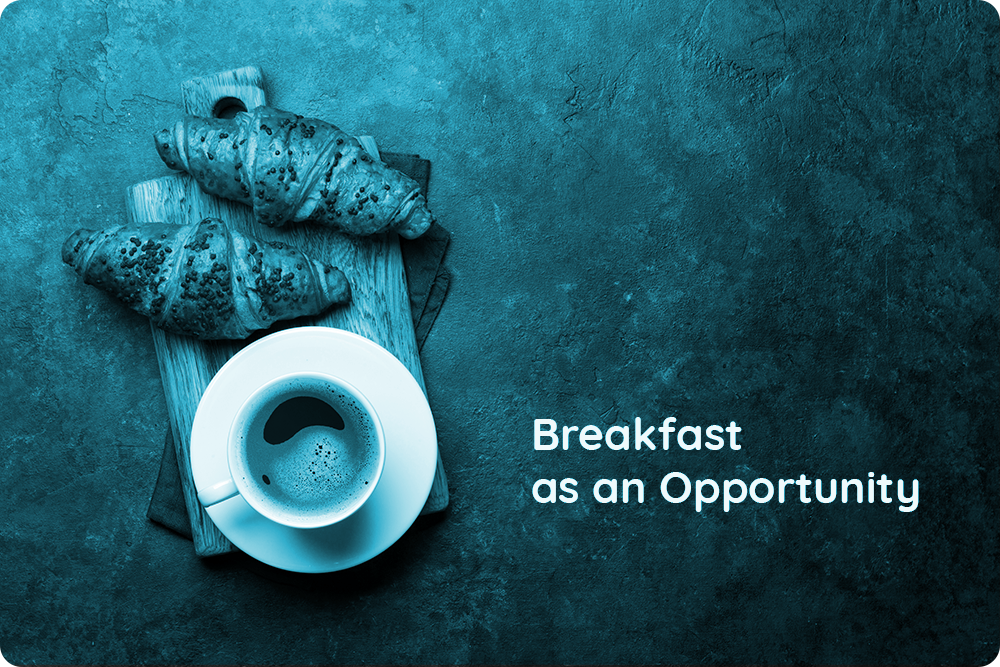Weathering Persistent Challenges
February saw consumer traffic decline for the seventh consecutive month, year on year. The challenging conditions witnessed in recent years by the UK foodservice market persist, with a combination of high inflation, spiralling costs and shrinking incomes having a significant negative impact upon the purchasing power of consumers. However, despite this rather gloomy outlook for operators, Meaningful Vision’s research reveals emerging opportunities to both grow traffic and encourage customer loyalty, notably in the breakfast-on-the-go segment.
Evolution of Breakfast Preferences
The most popular breakfast in the UK’s major cities consists of a coffee and a sandwich or pastry, reflecting the pace of life in the business districts where most customers favour a quick and convenient option, preferring takeaway to dine-in. Across the market, breakfast offerings range from a take-out yoghurt or piece of fruit to a dine-in Full English breakfast. Claiming origins as far back as the 17th century, the traditional “fry-up” served at a café or “greasy spoon” was the staple breakfast of Brits for many decades. But in recent years, fast-food operators have come to dominate the morning period, with dedicated breakfast menus and a growing range of products catering to a more diverse palette, including vegetarian and vegan options.
Dominance of Top Brands
Today, more than 70% of the breakfast market is served by the top five brands in the UK. McDonald’s leads the pack, having focused on this daypart for many decades and serving breakfast from the early hours. Greggs holds second position, showing the highest growth rates and closing the gap with the leader. Costa, Starbucks and Pret A Manger make up the go-to places for morning diners, with Pret’s breakfast share showing rapid growth. Bakeries and coffee shops form a majority of the list, and for these operators, breakfast makes up around one third of their daily traffic, underlining its importance as a key daypart. Total morning traffic now accounts for a quarter of total daily traffic across the foodservice industry, and this grew by 3% year-on-year during the 12 months ending February 2024.
City Centers Driving Breakfast Traffic
Nationwide, London, Manchester, Birmingham and Leeds demonstrated the highest growth rate in breakfast traffic over the last 12 months. City centre locations contributed around 70% of the total growth in breakfast traffic seen in 2023, correlating with a return by many people to the office commute after several years of working from home. Dictated by convenience, getting a bite to eat, or grabbing something to drink, is a driven by what works best with their commute, either walking or driving to the office.
Capitalising on Breakfast Market Potential
The breakfast market represents both a potential additional revenue stream and a way to attract new customers during off-peak hours, making it an alluring proposition for many operators. With relatively low food costs, the venture can be a profitable one and benefits operators by helping spread costs over a larger period of the day. Some brands have already announced their intentions and ambitions for their breakfast menus in 2024. Meaningful Vision’s analysis anticipates competition in the breakfast market will intensify in the year ahead. The stagnation in the wider economy continues to cause concern, with little sign of abating in the short to medium term, and consequently, more companies will be joining the search for new growth opportunities.
Menu Innovation and Customer Preferences
The typical breakfast menu offers a reasonably limited selection of food items, around 10% of the total menu throughout the day, much lower compared with the importance of breakfast’s share in daily traffic. This can be explained in part by very traditional tastes. A bacon and egg sarnie and a cup of tea or coffee, for example, are still capable of satisfying the appetites of many customers. Pret A Manger and McDonald’s, being food-oriented, offer a wider menu (20 or 30 products) than most of their competitors, with frequent new products, while brands like Starbucks and Costa cater to drink-only occasions. Coffee is a singularly important part of the breakfast menu, unrivaled in popularity in the UK, with potential to bring breakfast traffic to anyone offering a quality product at a competitive price. Meaningful Vision expects to see more food, beverage and breakfast menu innovations in the future as competition and interest in the sector builds.
Price Dynamics and Consumer Behaviour
Prices for items on the breakfast menu vary significantly. For example, Starbucks’ porridge is twice the price of McDonald’s, and a breakfast sandwich in Pret A Manger (without a subscription) is double the price of the Greggs equivalent. Similar price variations for coffee also exist but are less pronounced. With the cost-of-living crisis, affordable breakfast offers and meal deals have the potential to capture a significant portion of consumer traffic. Key to the success of both Greggs and McDonald’s is their insistence on affordable price offers, supported with frequent additional promotions.
Navigating Market Dynamics with Data
Developing an in-demand morning menu holds potential for many operators as breakfast grows in popularity with consumers. However, this strategy may not be relevant to all cities, all locations, and all businesses or companies. Meaningful Vision’s data analysis can help to highlight and pinpoint opportunities with precision. As this market becomes increasingly competitive, data-driven decisions will be crucial to successful outcomes.
Read our latest news.
